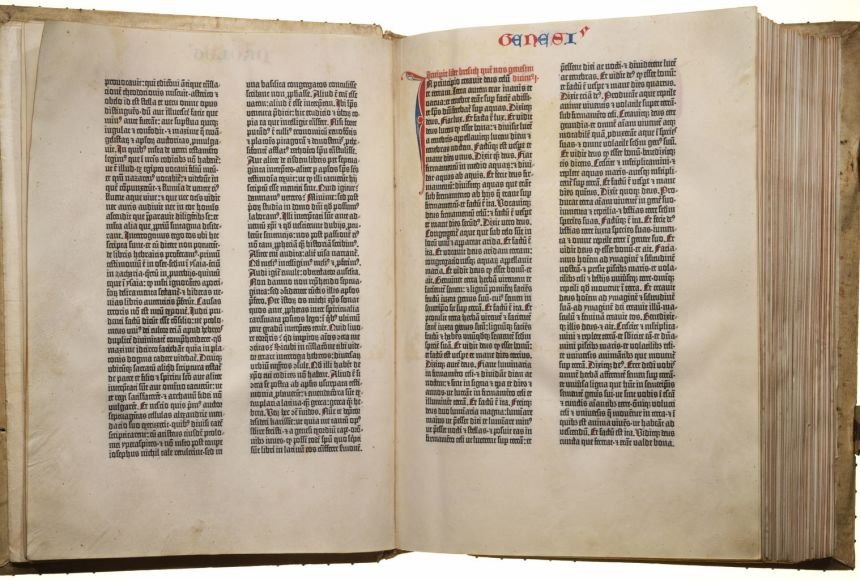In 1455, Johannes Gutenberg’s invention of the movable type printing press led to the publication of the Gutenberg Bible, marking a significant turning point in the history of printing. This groundbreaking technology revolutionized the way books were produced, paving the way for the mass production of books in Europe and contributing to the spread of knowledge, literacy, and the Renaissance.
The Gutenberg Bible, also known as the 42-line Bible or the Mazarin Bible, was the first major book printed using movable type in the Western world. Prior to Gutenberg’s invention, books were painstakingly copied by hand, making them expensive and inaccessible to the general population. Gutenberg’s printing press changed this by allowing for faster and more efficient production of books.
Gutenberg’s invention was not an overnight success. It took years of experimentation and refinement to develop a practical and efficient printing press. The key innovation was the use of movable type, where individual metal letters could be arranged and rearranged to form words and sentences. This allowed for the easy reproduction of text, making printing much faster and more cost-effective.
The Gutenberg Bible was printed in Latin and consisted of two volumes, containing a total of 1,282 pages. Each page was printed with 42 lines of text, hence the name “42-line Bible.” The printing process involved carefully arranging the individual metal letters, inking them, and pressing them onto the paper. This meticulous process ensured the clarity and legibility of the text.
The production of the Gutenberg Bible was a monumental task. It is believed that around 180 copies were printed, with some estimates suggesting that only about 48 copies have survived to this day. Each copy required a significant amount of time and effort to produce, making them highly valuable and sought after.
One of the surviving copies of the Gutenberg Bible is housed in the Library of Congress in the United States. This particular copy, known as the “Gutenberg Bible of 1455,” is considered one of the most complete and well-preserved examples. It serves as a testament to the craftsmanship and ingenuity of Gutenberg’s printing press.
The publication of the Gutenberg Bible had a profound impact on society, culture, and religion. Prior to its publication, books were primarily owned by the clergy and the aristocracy. The mass production of books made possible by Gutenberg’s printing press democratized access to knowledge and information. It played a crucial role in the spread of literacy and the dissemination of ideas during the Renaissance.
The Gutenberg Bible also had a significant influence on the Protestant Reformation. Martin Luther, the German theologian and key figure in the Reformation, used the printing press to distribute his writings and ideas to a wider audience. The availability of printed materials allowed for the rapid spread of religious texts and ideas, challenging the authority of the Catholic Church.
The publication of the Gutenberg Bible laid the foundation for the modern publishing industry. It sparked a printing revolution that transformed the way information was disseminated and consumed. The printing press became a catalyst for the exchange of ideas, the advancement of knowledge, and the development of new technologies.
To this day, the Gutenberg Bible remains a symbol of the power of the written word and the impact of technological innovation. It serves as a reminder of the importance of preserving and promoting literacy, knowledge, and the freedom of expression.
SEO excerpt:
Discover the historical significance of the Gutenberg Bible, the first book produced using movable type printing press in 1455. Explore how this groundbreaking invention revolutionized the world of printing and contributed to the spread of knowledge, literacy, and the Renaissance. Learn about the impact of the Gutenberg Bible on society, culture, and religion, and its lasting legacy in the modern publishing industry.
References:
1. Library of Congress: https://www.loc.gov/
2. British Library: https://www.bl.uk/
3. Gutenberg Museum: https://www.gutenberg-museum.de/
4. History.com: https://www.history.com/topics/inventions/printing-press

